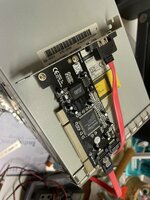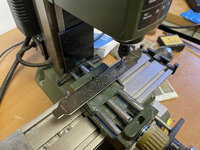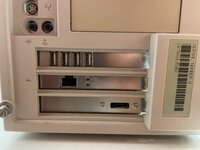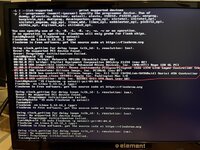Many thanks - very generously shared exploration and development work, especially XodlumRetro!
1. Additional information or clarification requests:
Do I understand correctly that the SATA card's native flash ICs are of sufficient storage capacity and compatible? So there's no need to replace them if Mac compatible firmware's installed directly using a PC, right? (For those cards you're familiar with.)
I ask because old Wintel PCI based PCs are dirt cheap or we already have one, so it's not clear to me why it's considered worth the trouble to desolder the flash ICs, load the firmware separately, then re-solder them. That is, why not just use a PC to install the firmware, thus avoiding all the soldering work?
And if anyone has installed firmware via a PC and FreeDOS (FreeDOS.org), if inclined please advise which version you recommend and its download location. (Presumably from FlashROM.org/Downloads, but I haven't found the most suitable file to download yet.) And if feeling generous please advise the installation steps.
2. A terrific soldering option:
You may solder using water soluble organic flux instead of rosin flux. It renders utterly perfect joints and enables easy fine pitch IC soldering by simply swiping each row of pins with a ball of molten solder on your soldering iron tip. The organic flux keeps the solder completely clean so it retains full surface tension like pure mercury, so the molten ball jumps cleanly from one pin to another leaving (usually) no shorts. But for the last three or four pins a jump off platform is needed, such as copper braid or just a thin strip of solid copper or other solder compliant metal. It's available as a liquid which you apply generously with a small art brush. Fully immerse the working area - use plenty of it. You need either solid solder (with no rosin core) or solder cored with the same organic flux.
It washes off completely with mere hot water, though I use detergent and a toothbrush as well to insure any other contaminants are also removed. You must wash it off reasonably promptly - the flux is both corrosive and conductive so it must be completely removed. You can work for about 90 minutes but then must wash. Longer linger times result in metal surface tarnish - not serious but not as gorgeous. You must clean your work area and all tools as well since any residue would cause corrosion and conduction trouble for anything which contacts it.
The work area cleaning overhead is a bit inconvenient, but I use it for any significant soldering work because it's so superbly easy to work with, enables ordinary soldering irons to solder fine pitch easily, and the results are perfect mirror finish joints which are utterly solid and reliable.
The usual solder vendors have it. I think Kester's type name is 941. AimSolder.com calls it OAJ flux. But I think the common term is simply liquid organic flux. You'll need the liquid even if you acquire organic core solder because that solder alone delivers far too little fluid for any work in my experience, especially fine pitch work. (I doubt it was actually intended to be used alone in most cases.)
It's cheap. And working with it will make you wonder how you survived soldering the old way. But that's just my experience, and I'm nobody's nanny of course.
I hope to erect a new page to document this essentially verbatim along with other random nerd chat on AirplaneHome.com/NerdCaveNotes within a few weeks or so.
Many thanks all - great grist!




